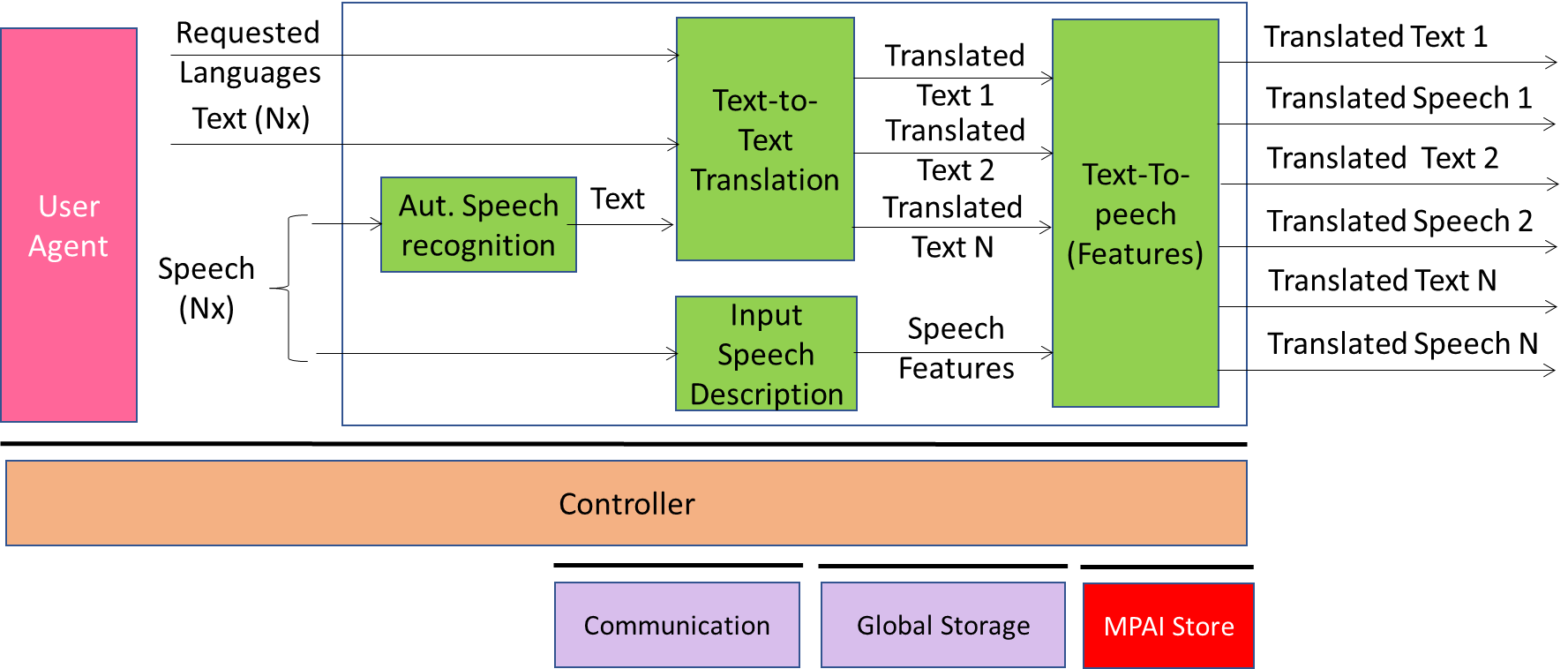1 Version
V2.1
2 Functions
One-to-Many Speech Translation (MMC-MST) enables one human speaking their language to broadcast text or speech to two or more audience members, each reading or listening and responding in a different language. It the desired output is speech, humans can specify whether their speech features should be preserved in the translated speech.
One-to-Many Speech Translation:
- Receives
- Input Selector – indicates whether
- Input is Text of Speech
- Speech Features of Input Speech should be preserved in Translated Speech.
- Requested Language – Language of Speech and Target Speech.
- Input Text – Text to be translated.
- Input Selector – indicates whether
- Produces
- Translated Text1 or Speech1
- Translated Text2 or Speech2
- etc..
3 Reference Model
Figure 1 depicts the AIMs and the data exchanged between AIMs.

Figure 1 – Bidirectional Speech Translation (MMC-BST) AIW
4 I/O Data
The input and output data of the One-to-Many Speech Translation Use Case are given by Table 1:
Table 1 – I/O Data of One-to-Many Speech Translation
| Input | Descriptions |
| Input Selector | Determines whether: 1. The input will be in Text or Speech 2. The Input Speech features are preserved in the Output Speech. |
| Language Preferences | User-specified input language and translated languages |
| Input Speech | Speech produced by human desiring translation and interpretation in a specified set of languages. |
| Input Text | Alternative textual source information. |
| Output | Descriptions |
| Translated Speech | Speech translated into the Requested Languages. |
| Translated Text | Text translated into the Requested Languages. |
5 JSON Metadata
https://schemas.mpai.community/MMC/V2.1/AIWs/OneToManySpeechTranslation.json
| AIMs | Name | JSON |
| MMC-ASR | Audio Scene Description | X |
| MMC-TTT | Text-to-Speech | X |
| MMC-ISD | Input Speech Description | X |
| MMC-TTS | Text-to-Speech | X |

